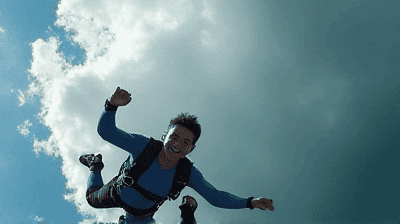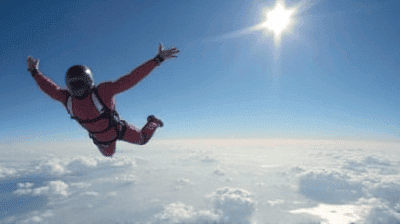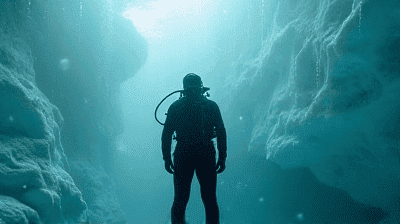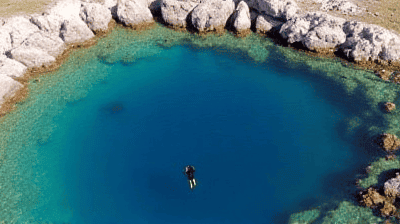Can You Skydive in a Hurricane? Extreme Weather and Skydiving Safety

Skydiving is an exhilarating sport that draws thousands of enthusiasts each year, offering a unique perspective of the world from above. While most jumps occur under clear skies and favorable weather conditions, extreme weather, such as hurricanes, raises intriguing questions about safety and feasibility. Can you skydive in a hurricane? What are the risks involved, and how does extreme weather affect skydiving safety?
Understanding Hurricanes
What is a Hurricane?
A hurricane is a powerful tropical storm system characterized by strong winds, heavy rainfall, and low atmospheric pressure. These storms form over warm ocean waters and can cause significant destruction upon landfall. Key features of hurricanes include:
Wind Speeds: Hurricanes are classified into categories based on their wind speeds, ranging from Category 1 (74-95 mph) to Category 5 (157 mph or higher). Wind speeds play a critical role in determining the storm's intensity and potential for destruction.
Eye of the Hurricane: The central part of the storm, known as the eye, is typically characterized by calm winds and clear skies. However, this peaceful area is surrounded by the eyewall, which contains the most severe winds and heavy rains.
Rainfall and Storm Surges: Hurricanes bring heavy precipitation, leading to flooding and significant storm surges that can inundate coastal areas. The combination of high winds and flooding creates dangerous conditions during a hurricane.
The Formation and Lifecycle of Hurricanes
Hurricanes are born from specific meteorological conditions:
Warm Ocean Waters: Hurricanes require temperatures of at least 80 degrees Fahrenheit in ocean waters to develop. The warm water fuels the storm, enabling it to gain strength.
Atmospheric Disturbances: Disturbances such as tropical waves can initiate the development of a hurricane. These disturbances create a low-pressure area that can evolve into a tropical depression and eventually a tropical storm.
Environmental Factors: Factors such as wind shear, humidity, and upper-level atmospheric conditions influence the development of hurricanes.
The Impact of Hurricanes
The destructive potential of hurricanes can be far-reaching. When hurricanes make landfall, they can cause:
Widespread Destruction: High winds can damage buildings, uproot trees, and disrupt transportation infrastructure.
Flooding and Erosion: Storm surges and heavy rains lead to flooding in coastal and inland regions, causing road closures and water damage to homes and businesses.
Loss of Life and Injury: Hurricanes pose significant risks to human safety, and despite advance warnings, they can result in casualties and injuries.
Skydiving and Weather Conditions

The Importance of Weather in Skydiving
Weather conditions are critical to the safety and enjoyment of a skydive. Factors that must be considered include:
Wind Speed and Direction: High winds can affect parachute stability and landing accuracy. Operators closely monitor wind conditions before allowing jumps.
Visibility: Good visibility is essential for navigation during free fall and landing. Poor weather can obscure landmarks and create hazards.
Cloud Cover: Cloud cover can impact altitude and visibility during jumps. Jumpers must refrain from jumping in dense clouds, which can hide obstacles.
Common Weather Conditions for Skydiving
Skydiving typically occurs under specific weather conditions:
Clear Skies: Bright, blue skies offer optimal visibility and enhance the overall experience.
Light Winds: Calm winds are preferred, as high winds can create turbulence and affect the parachute deployment process.
Mild Temperatures: Temperatures conducive to comfort and safety enhance the enjoyment of the adventure.
Skydiving in Extreme Weather Conditions
The Risks of Skydiving in Severe Weather
Extreme weather, such as thunderstorms, high winds, and hurricanes, poses serious risks for skydiving. The key concerns include:
Unpredictable Conditions: Extreme weather can change rapidly, creating dangerous situations for jumpers. A sudden gust of wind or lightning strike can jeopardize safety.
Parachute Performance: High winds can affect the parachute’s performance, increasing the risk of malfunctions and unstable landings.
Landing Challenges: Poor weather can impact visibility and landing zones, making it more difficult for jumpers to navigate safely upon descent.
Can You Skydive in a Hurricane?
Given the numerous risks associated with hurricanes, the short answer is no; it is not safe to skydive in a hurricane. The following factors explain why:
High Wind Speeds: Hurricanes are characterized by sustained winds of 74 mph or greater. These wind conditions are well above the limits safe for skydiving, making jumping extremely dangerous.
Turbulence and Wind Shear: The turbulent environment created by a hurricane can lead to unpredictable changes in wind speed and direction during free fall, increasing the likelihood of accidents.
Heavy Rain and Low Visibility: Hurricanes bring heavy rainfall and can create thick clouds, drastically reducing visibility and increasing the risks of collisions with obstacles.
Emergency Situations: If an emergency occurs during a skydive in a hurricane, the lack of controlled landing options can lead to life-threatening situations.
Safety Considerations for Skydiving

Equipment Safety
The equipment used in skydiving must be equipped to handle the typical conditions encountered during jumps:
Parachute Systems: Skydiving equipment must be rigorously inspected before each jump. A well-maintained parachute system includes a main parachute, reserve parachute, and an automatic activation device (AAD) to deploy the reserve if necessary.
Aerial Communication: Having reliable communication between jumpers and the ground crew is essential for coordinating jumps and addressing emergency situations.
Weather Resilience: Operators must ensure that parachute systems can withstand typical weather challenges but are in no way rated to handle extreme conditions such as those found in a hurricane.
Training and Certification
Skydivers must be properly trained and certified to ensure safety during dives:
Skydiving Certification: Only certified skydivers should undertake jumps. Reputable organizations such as the United States Parachute Association (USPA) set professional standards for skydiving.
Ongoing Training: Regular training, reviews of emergency protocols, and participation in refresher courses help improve skills and increase safety.
Special Situations Training: Experienced jumpers may train for specific situations, such as high winds, but extreme weather like hurricanes falls outside typical training.
The Role of Weather Consultations
Before jumping, skydiving operators conduct weather consultations to assess conditions and risks. This includes:
Monitoring Weather Patterns: Operators continuously monitor forecast conditions, including wind, temperature, and precipitation.
Making Informed Decisions: Based on weather assessments, operators may cancel or postpone jumps to ensure safety.
Flexibility and Adaptability: Operators and instructors communicate with team members to adapt plans as weather conditions change.
Expert Opinions on Skydiving in Hurricanes
Perspectives from Skydiving Professionals
Experts in the skydiving community tend to agree on the dangers of attempting to skydive during hurricanes. Key insights from professionals include:
The Hardline Stance: Many experienced instructors emphasize that no reputable skydiving operation would consider allowing jumps during a hurricane due to the associated risks.
Real-Life Experiences: Skydiving professionals often share stories of near misses and accidents that occurred under fraying weather conditions, emphasizing the importance of making safety the priority.
Gauging Conditions: Professionals advise jumpers to understand their limitations and to always prioritize safety over adventure. Adverse weather should be strictly avoided.
Case Studies and Incidents
There have been notable cases of skydiving accidents linked to severe weather conditions. Some key examples include:
Thunderstorms: Jumpers who have ignored warnings about thunderstorms faced dire consequences when caught in turbulence and were unable to safely control their descent.
High Winds: Jumpers who attempted to skydive in high winds often experienced unstable parachute openings, leading to dangerous emergencies upon landing.
Professional Recommendations: These case studies reinforce the recommendation that skydivers should always heed weather advisories and respect danger signs, particularly those indicated for severe weather such as hurricanes.
Alternatives to Skydiving in Extreme Weather

Safe Skydiving Practices
While extreme weather should deter jumpers, there are numerous opportunities for safe skydiving:
Choosing Optimal Seasons: Many regions experience specific seasons of stable weather, making it ideal for skydiving. Aim to schedule jumps during cooler months when conditions are typically more predictable.
Indoor Skydiving: For those seeking the thrill of free fall without the environmental risks, indoor skydiving offers a safe and exciting alternative. Facilities simulate the sensation of free falling in controlled environments.
Training and Verification: New jumpers can spend time honing their skills indoors or in mild weather before taking the plunge outside, gaining confidence along the way.
Planning Skydiving Adventures
When planning your skydiving adventure, consider:
Researching Locations: Explore reputable skydiving locations that prioritize safety and weather considerations before booking your jump.
Seasonal Trends: Understand seasonal weather patterns in your chosen location to select optimal jump days.
Flexible Scheduling: Be prepared to adjust your plans in response to changing weather conditions. Flexible scheduling increases the likelihood of experiencing ideal jumping weather.
Conclusion
Skydiving is undeniably one of the most thrilling activities anyone can experience, but the decision to jump in extreme weather, particularly in hurricanes, poses serious risks. Understanding the mechanics of hurricanes, safety considerations, and the severe challenges posed by extreme weather is essential for every skydiving enthusiast.
While the desire for adventure is natural, prioritizing safety and making informed decisions will ultimately lead to a more enjoyable experience. By respecting the power of nature, jumpers can relish the beauty and excitement of skydiving under ideal conditions, ensuring that each leap is memorable for all the right reasons.








